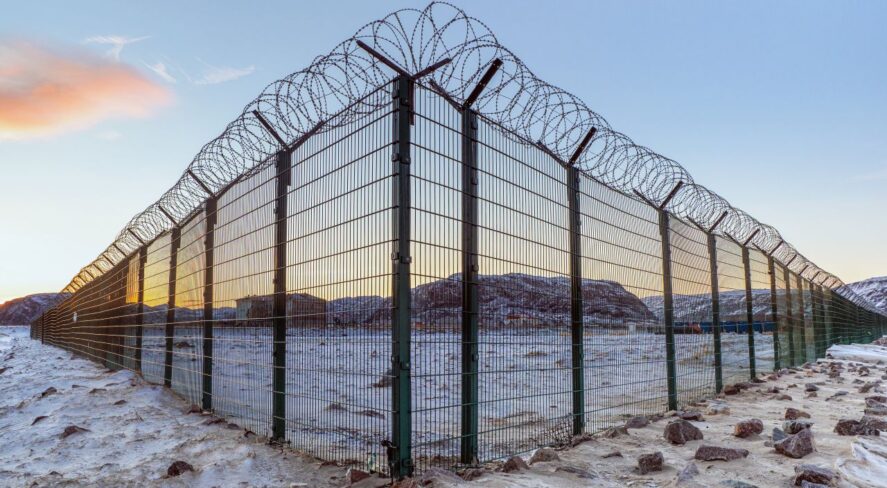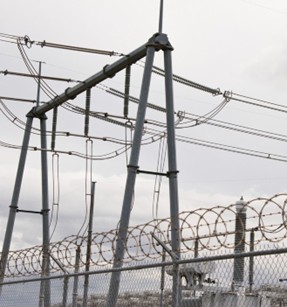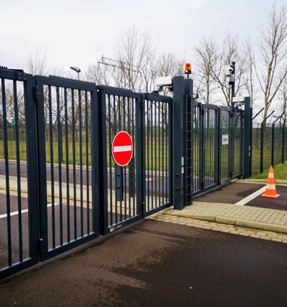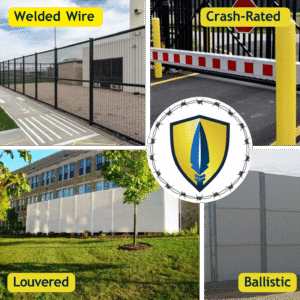The Fence Perspective: Bringing Construction to Security


My name is Josh Velazquez, and I’m the vice president of the Fence Division at SAGE Integration. At SAGE I lead high-security perimeter projects for critical infrastructure—from data centers to substations, solar farms, and more. With a degree in construction management from Bowling Green State University and over 15 years in the construction industry, I’ve built a career rooted in the field, with a focus on delivering solutions that don’t just meet structural requirements but actively support security goals.
What makes my work meaningful is knowing that the fences and systems we build are often the first line of defense for some of the most sensitive sites in the country. It’s construction with a mission—and I take a lot of pride in bringing my team’s craftsmanship, focus on safety, and problem- solving mindset into the world of physical security.

Outside of work, I’m a girl dad to three amazing daughters, and I coach a local soccer league. It’s one of the most rewarding parts of my week (most of the time, anyway, provided I’m not contending with any preteen drama) —watching these young athletes grow in confidence, learn teamwork and discover their voice. That same spirit of mentorship is something I try to bring to my professional life as well, whether I’m supporting new team members on a job site or encouraging young professionals through programs like SIA RISE.
One of our inaugural fence projects at SAGE involved installing an expanded metal fence to safeguard a solitary substation nestled within the challenging terrain of the Allegheny National Forest. This fence served as the substation’s primary defense against both wildlife and human interference. The project’s uniqueness stemmed not only from the unpredictable landscape but also from its location within a popular forested area, frequented by hikers and tourists. Consequently, the fence needed to deter curious wildlife from potential hazards and be resistant to cutting and climbing to prevent unauthorized access.

There are a few different types of high-security fencing systems that may be selected depending on the needs of the client. Here is a brief overview of what those are:
Welded Wire (usually black): Typically chosen for aesthetics and opacity. Could be anticlimb and/or anticut
- Louvered: Typically used for mechanical areas, provides a visual block but still allows air flow
- Crash Rated: Prevents vehicle entry by random, expanded metal isn’t crash rated and could inadvertently allow passage for a vehicle
- Ballistic: Prevents ballistic ammunition from passing through the fence
Deter, Detect, Delay and Deny
At the conclusion of our expanded metal fence project in Allegheny National Forest, we effectively implemented the core principles of physical security: Deter, Detect, Delay and Deny. Our fencing solution not only protected the substation from unauthorized access but also won us accolades from our first client, marking a significant milestone in our commitment to comprehensive security solutions.
Where Fence Meets Integration
What good is a gate if nothing will tell it to move?

A gate alone is just a barrier; without added intelligence, it’s static and unresponsive. This is where our integration team steps in, transforming passive structures into intelligent, responsive security solutions.
By integrating access control systems, video surveillance, and intrusion detection, we create a security ecosystem for the end user. These components work in harmony, providing real-time monitoring and automated responses to potential threats.
This integrated approach not only enhances overall security but also streamlines operations, ensuring that every component—from the gate to the control system— functions as part of a unified whole. It’s the connection between physical barriers and intelligent systems that define modern security infrastructure.
Advice for Young Professionals
“What advice would you give to someone entering the security industry from a construction background—or vice versa?”
Entering the fence world, I initially thought it would be easy—just put up a barrier and call it a day. But I quickly learned that fencing is so much more complex and has so much more variation than meets the eye.
There are so many different types of fence and just as many applications, each with its own set of challenges depending on the terrain, environment, and security needs.
My biggest advice? Expect the unexpected. Whether you’re crossing from security into construction or the other way around, stay open to learning—because every job will teach you something new.
And when thing get tough—and they will—remember: tomorrow is a new day. No matter how hard it gets, keep showing up and trying your best. That persistence is what sets you apart.
The views and opinions expressed in guest posts and/or profiles are those of the authors or sources and do not necessarily reflect the official policy or position of the Security Industry Association.
This article originally appeared in RISE Together: A Newsletter for Emerging Security Leaders, presented by SIA’s RISE community.
